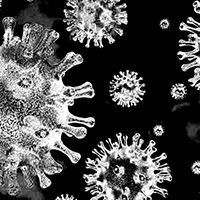Awake prone positioning in non-intubated patients for the management of hypoxemia in COVID-19: A systematic review and meta-analysis

All claims expressed in this article are solely those of the authors and do not necessarily represent those of their affiliated organizations, or those of the publisher, the editors and the reviewers. Any product that may be evaluated in this article or claim that may be made by its manufacturer is not guaranteed or endorsed by the publisher.
Authors
Coronavirus disease-2019 (COVID-19) may lead to hypoxemia, requiring intensive care in many patients. Awake prone positioning (PP) is reported to improve oxygenation and is a relatively safe modality. We performed a systematic review of the literature to evaluate the available evidence and performed meta-analysis of the effect of awake PP in non-intubated patients on improvement in oxygenation and reducing the need for intubation. We searched the PubMed and EMBASE databases to identify studies using awake PP as a therapeutic strategy in the management of COVID-19. Studies were included if they reported respiratory outcomes and included five or more subjects. The quality of individual studies was assessed by the Qualsyst tool. A meta-analysis was performed to estimate the proportion of patients requiring intubation. The degree of improvement in oxygenation parameters (PaO2: FiO2 or PaO2 or SpO2) was also calculated. Sixteen studies (seven prospective trials, three before-after studies, six retrospective series) were selected for review. The pooled proportion of patients who required mechanical ventilation was 0.25 (95% confidence interval (CI) 0.16-0.34). There was a significant improvement in PaO2: FiO2 ratio, PaO2, and SpO2 during awake PP. To conclude, there is limited evidence to support the efficacy of awake PP for the management of hypoxemia in COVID-19. Further RCTs are required to study the impact of awake PP on key parameters like avoidance of mechanical ventilation, length of stay, and mortality.
How to Cite

This work is licensed under a Creative Commons Attribution-NonCommercial 4.0 International License.






